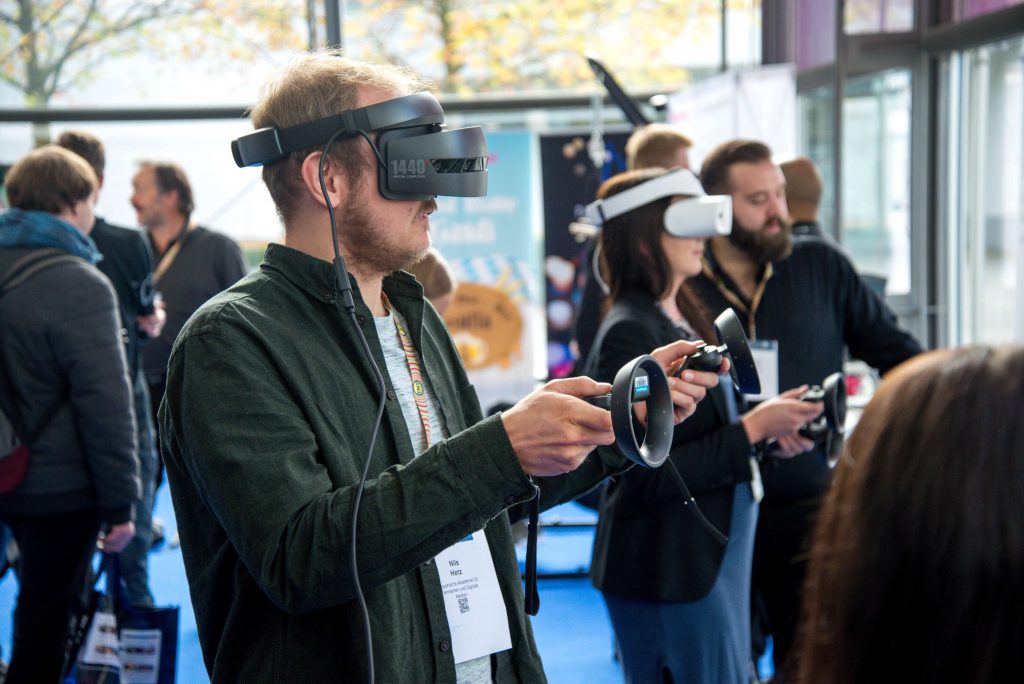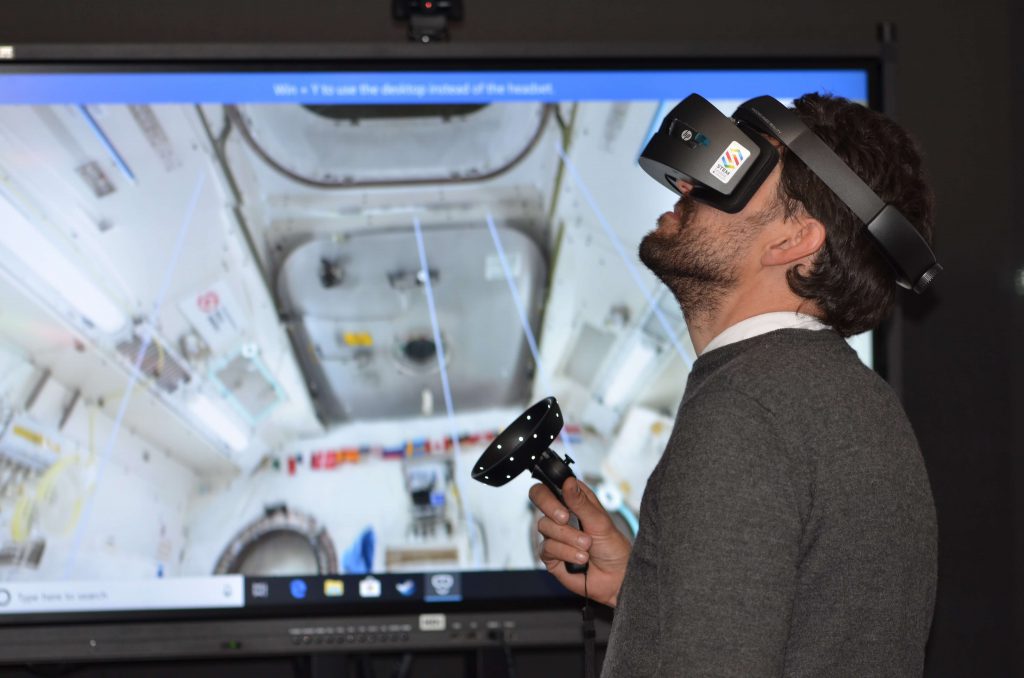Virtual reality recruitment is one of the buzziest trends of the past few years. Analysts predicted that 2019 would be a turning point for the VR industry – with either widespread adoption or industry stagnation sinking sales and effectively killing the future of this technology. Smartphone VR suffers from low popularity, but headset VR is gaining ground in the consumer market. For recruiters, this kind of virtual reality presents an interesting opportunity to change and improve the candidate experience.
Virtual reality (or VR) is an immersive, interactive experience that works through a headset to simulate another reality. Wearing a VR headset can put you in a virtual world, a shared experience with others wearing a VR headset. Companies are exploring ways to use VR in their day to day operations. For example, the Houston-based Training Center of Air Conditioning and Heating launched a full technician course that allows students to get “hands-on” experience using an HVAC lab – all through an immersive learning simulation.
From training to marketing and e-commerce, VR has implications for the way we interact and work together in the business world. How will VR change the way recruiters and HR teams find talent and fill their open positions?

By expanding your remote recruitment
Free sourcing tools and recruitment platforms can only take you so far. Virtual reality recruitment presents a tool for hiring managers to expand their candidate pool to remote candidates. Recruiters can design simulated office tours and interviews with candidates who are far afield. A fully immersive experience allows candidates to see and feel the office culture and picture themselves in the role without having to be physically present.
Likewise, virtual reality recruitment has the potential to be a more cost-effective way to entertain lots of candidates throughout the process. US companies spend an average of $4,000 to fill an open position. Virtual reality recruitment can give hiring managers the ability to assess more candidates without spending the money to physically bring them in for multiple interviews. It can lift some of the constraints that many companies face in finding top talent.
By combining Virtual Reality with AI
Perhaps the biggest use case for virtual reality in recruitment is the ability to simulate an on-the-job experience during the interview process. As Forbes contributor Bernard Marr argues,
“VR is about putting people inside virtual environments and those environments – and their inhabitants – are likely to become increasingly intelligent over the next year…Virtual environments allow students to practice anything from construction to flight to surgery without the risks associated with real-world training.”
Recruiters can combine virtual reality recruitment methods with skills assessments for a truly immersive on-the-job assessment of a candidate’s true talent. As recruiters move away from misleading resumes, a fully immersive skills test can highlight knowledge necessary to be successful in a position. Talent Trials can be expanded beyond editing documents, spreadsheets, or coding to include presentation skills, teamwork, and other interpersonal capabilities.

By going beyond one-way video interviews
One-way video interviews are a fantastic way to get to know a candidate. But what if we could go a step further? VR lets recruiters enjoy some of the key benefits of one-way interviews, and also go beyond some of the time restrictions and other limitations. Video interviews allow recruiters to get a feel for a candidate’s personality and culture fit, and job seekers love the video interview process. However, pre-recorded videos can make people feel self-conscious; they may not work as good predictors of on-the-job success. Virtual reality empowers recruiters to meet a candidate “in-person” and still see them in action as a potential new employee.
By providing a great candidate experience
Let’s face it – competition for talent is steep. Companies must wow candidates to get them to sign on. Virtual reality recruitment is a sexy new tool in the talent tech world that can make a company stand out from the crowd. According to research, nearly 60% of candidates have had a poor candidate experience during their job search; 72% of those candidates share their negative impression online or with others. Online video interviewing has been proven to have a positive impact on a candidate’s experience with your company, and VR promises to increase that impact exponentially.
Top Tips: Companies using Virtual Reality in Recruitment
- Use Virtual Reality to show off your workplace environment
Jet.com is an American e-commerce company that sells a wide range of products to customers both nationally and across the globe. The company is utilizing virtual reality in recruitment by giving potential candidates an opportunity to witness the corporate culture, office space as well as even getting a taste of the companies ‘happy hour’ celebrations. This gives candidates an insight into the potential workplace they may be employed at, before deciding if the environment suits them or not. - Use Virtual Reality to give candidates an insight into the role
Another company that is employing the use of virtual reality in recruitment is German railway company, Deutsche Bahn. Due to typically receiving little to no interest from younger generations when hiring for positions such as train conductors, the company decided to use virtual reality to give younger people a more in depth understanding of the role and what their responsibilities would entail. The result? A huge increase in applicants with improved skills sets, and ones that are genuinely excited to work in the role. - Virtual Reality to understand candidates decision making
Finally, Commonwealth Bank has started to use virtual reality to test candidates’ decision making in real-life scenarios. They give the candidates situations that their employees actually face, and use VR to assist in understanding how the candidate makes decisions in stressful and confronting situations. This gives the bank a better awareness of candidates who have the qualities and skills set they are looking for.

Final thoughts on Virtual Reality in recruitment
VR is still expensive – and it privileges companies that can spend big bucks. For now, companies should focus on the immersive experience aspect virtual reality promises to deliver in the future. How can recruiters create a real-world simulation for the candidate? Talent Trials from Vervoe are just one option. Augmented reality – a similar, though less expensive and investment-intensive option – can give recruiters the ability to showcase short presentations or office tours. This year is predicted to be a big year for virtual reality recruitment; savvy recruiters should keep an eye on how this technology develops in the coming months.




















